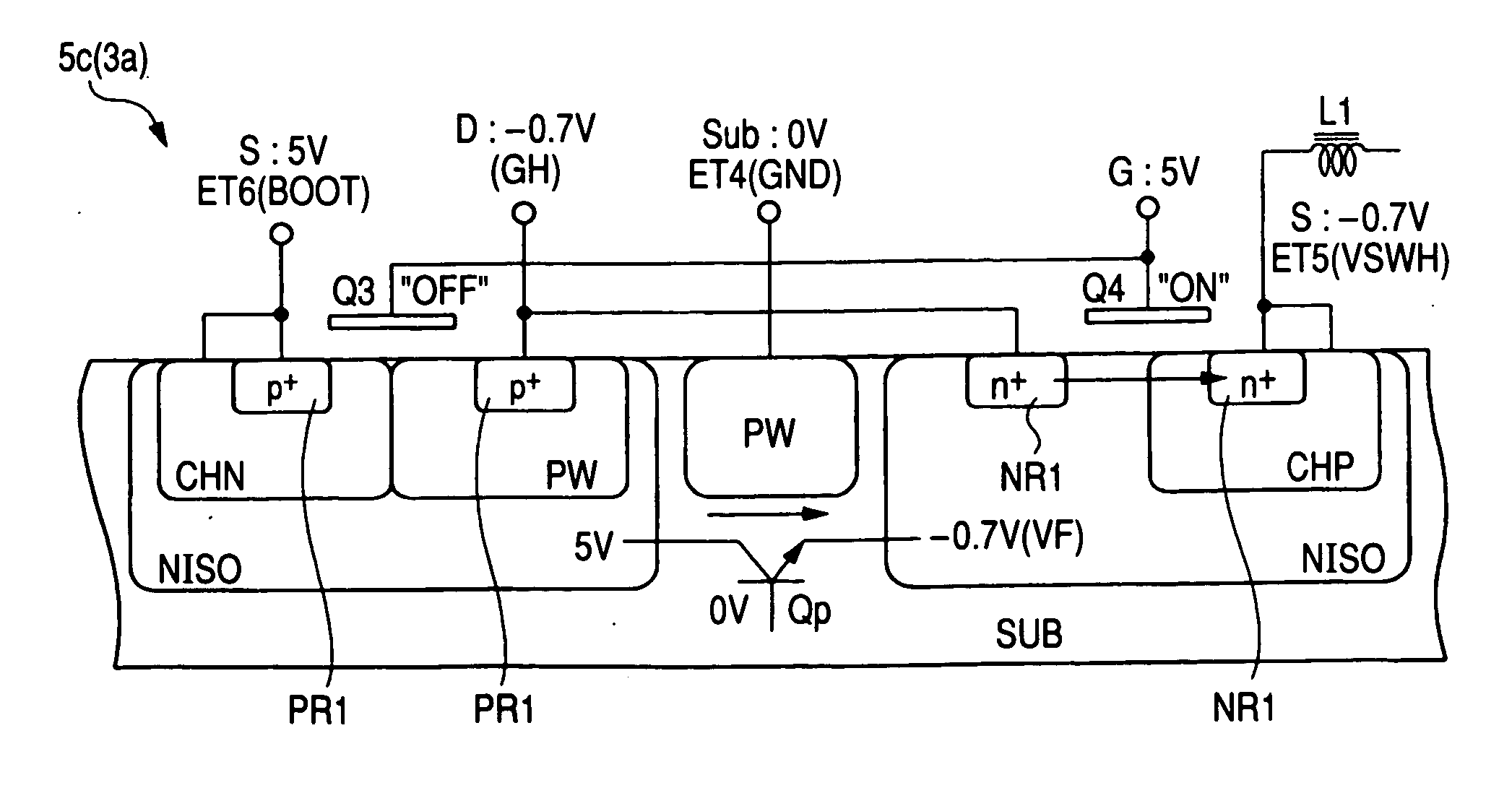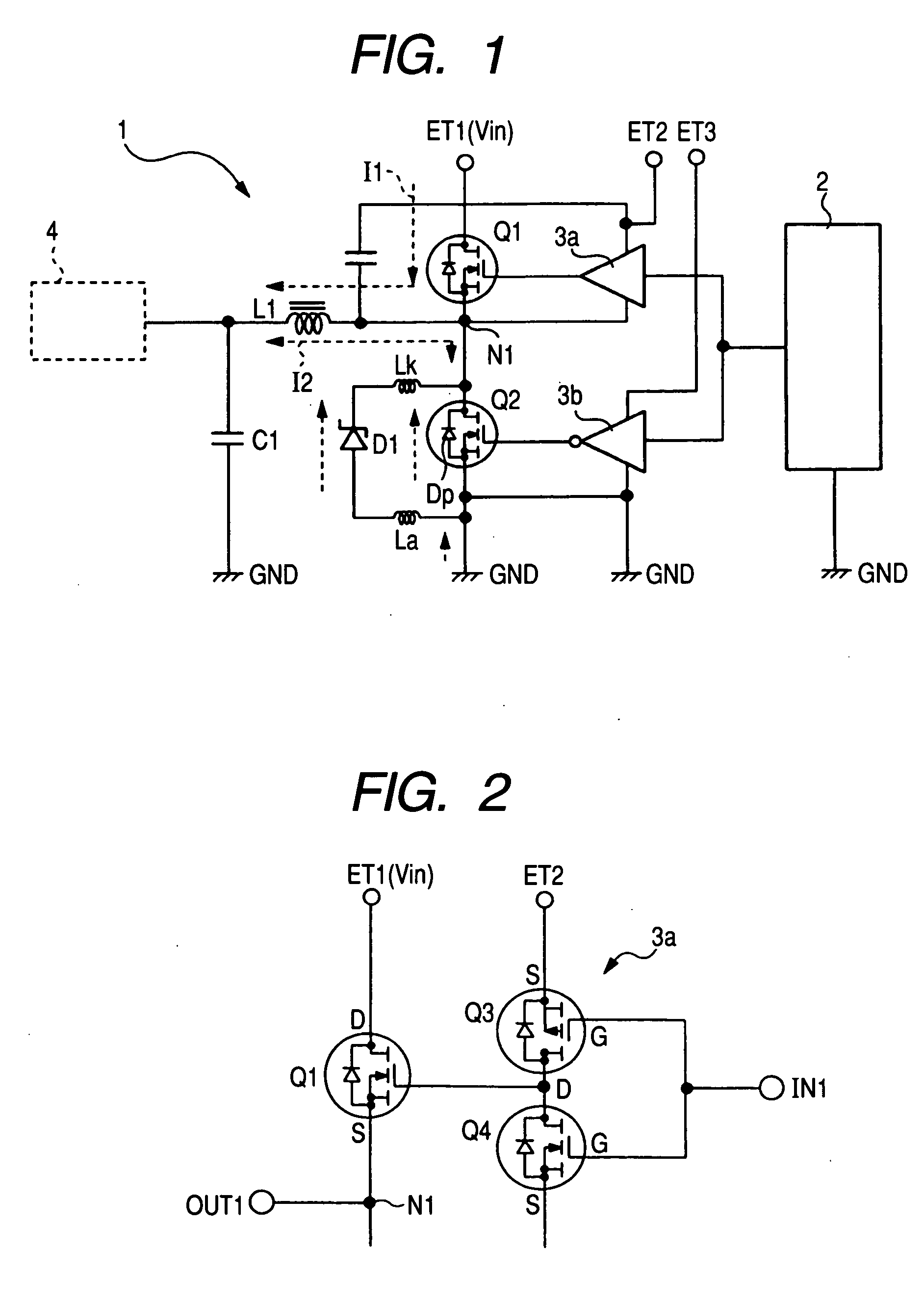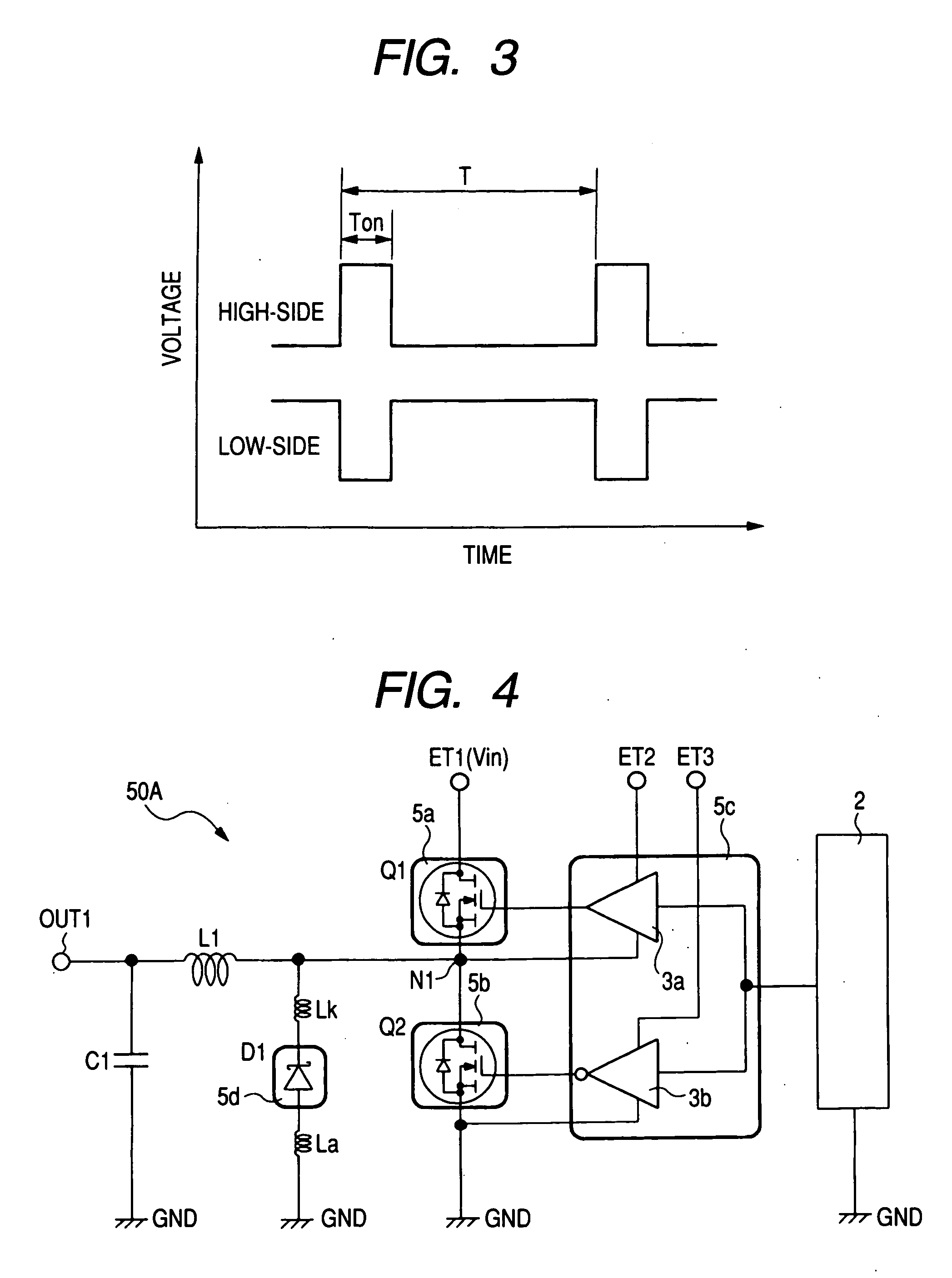Semiconductor device and a manufacturing method of the same
a technology of semiconductor devices and manufacturing methods, applied in the direction of solid-state devices, resistors, basic electric elements, etc., can solve the problems of drastic increase in these losses, insufficient effect to reduce conduction loss or recovery loss, etc., and achieve the effect of improving the conversion efficiency of power supply voltag
- Summary
- Abstract
- Description
- Claims
- Application Information
AI Technical Summary
Benefits of technology
Problems solved by technology
Method used
Image
Examples
embodiment 1
[0092] A semiconductor device according to Embodiment 1 is a non-insulated DC-DC converter to be used in a power supply circuit of electronic devices such as desktop personal computers, laptop personal computers, servers and game machines. FIG. 1 illustrates one example of a circuit diagram of the non-insulated DC-DC converter 1. The non-insulated DC-DC converter 1 has elements such as control circuit 1, driver circuits (first and second control circuits) 3a, 3b, power MOS (first and second field effect transistors) Q1, Q2, SBD (Schottky Barrier Diode) D1, coil L1 and condenser C1.
[0093] The control circuit 2 is a circuit for supplying a signal controlling the width (on time) of a voltage switch-on of the power MOS Q1, Q2 such as pulse width modulation (PWM) circuit. This control circuit 2 is housed in a package different from that of the power MOS Q1, Q2. The outputs (terminals for control signal) of this control circuit 2 are electrically connected to the inputs of the driver cir...
embodiment 2
[0136] A modification example of the disposing position of the SBD in a semiconductor chip will be described in Embodiment 2. FIG. 25 is an overall plan view of a semiconductor chip 5b, while FIG. 26 is an overall plan view of the semiconductor chip 5b after addition of the wire WA and external electrode 7E to the semiconductor chip 5b of FIG. 25. Although FIGS. 25 and 26 are plan views, gate fingers 6a and 6b and pad BP1 are hatched to facilitate the understanding of the diagrams.
[0137] In this Embodiment 2, the formation region SDR of the SBD D1 is disposed near the long side on one side of the semiconductor chip 5b. In particular, the formation region SDR of the SBD D1 is disposed on a long side near the external electrode 7E as illustrated in FIG. 26. By such an arrangement, a parasitic inductance on the anode side of the SBD D1 can be reduced, whereby a larger current can be transferred to the SBD D1. This enables a more reduction in the conduction loss and recovery loss of th...
embodiment 3
[0139] In Embodiment 3, another modification example of the arrangement position of the SBD in a semiconductor chip will be described. FIG. 27 is an overall plan view of a semiconductor chip 5b, while FIG. 28 is an overall plan view of the semiconductor chip 5b after addition of a wire WA and an external electrode 7E to FIG. 27. FIGS. 27 and 28 are each a plan view, but gate fingers 6a, 6b and pad BP1 are hatched to facilitate the understanding of these diagrams.
[0140] In Embodiment 3, the formation region SDR of the SBD D1 is disposed near one short side of the semiconductor chip 5b. The formation region SDR of the SBD D1 extends along the short side (second direction Y) of the semiconductor chip 5b. In particular, as illustrated in FIG. 28, the formation region SDR of the SBD D1 is disposed on a short side near the external electrode 7E. By such an arrangement, a parasitic inductance on the anode side of the SBD D1 can be reduced and therefore, a larger current can be transferred...
PUM
 Login to View More
Login to View More Abstract
Description
Claims
Application Information
 Login to View More
Login to View More - R&D
- Intellectual Property
- Life Sciences
- Materials
- Tech Scout
- Unparalleled Data Quality
- Higher Quality Content
- 60% Fewer Hallucinations
Browse by: Latest US Patents, China's latest patents, Technical Efficacy Thesaurus, Application Domain, Technology Topic, Popular Technical Reports.
© 2025 PatSnap. All rights reserved.Legal|Privacy policy|Modern Slavery Act Transparency Statement|Sitemap|About US| Contact US: help@patsnap.com



